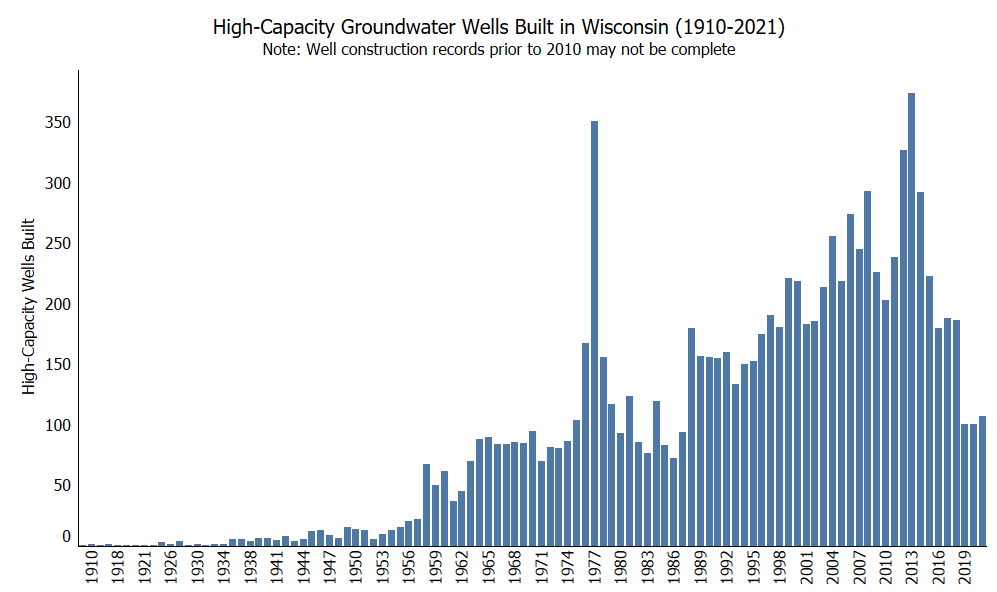Where's Wisconsin's Water?
Visualizing the Proliferation of High-Capacity Groundwater Wells Over the Last Decade
For decades, residents of Wisconsin's Central Sands region have seen disappearing freshwater ponds, lakes, and streams due to declining groundwater levels. But for a decade beginning in 2011, the state Department of Natural Resources claimed it lacked the authority to impose restrictions on high-capacity groundwater wells, often used in agricultural and industrial operations.
Lawsuits from environmental groups tested this argument by challenging the DNR's approval of a number of large-scale industrial operations, including a handful of high-capacity well permits. In July 2021, the Wisconsin Supreme Court agreed with them, and ruled the DNR does in fact have the authority to "consider the environmental effects of a proposed high-capacity well." Research has shown these effects can include diminishing groundwater reserves and arsenic contamination in nearby wells.

While high-capacity well construction has declined slightly since these and other water issues became major political issues in some parts of the state during the 2016 election, well owners who were granted permits prior to the Supreme Court's decision continue to operate them. Today, the DNR provides much more comprehensive data about high-capacity well construction and use, although no downloadable statewide dataset of high-capacity wells and their groundwater consumption has existed prior to this project.
Using Python and the Selenium library for web app manipulation, the data for the map below were copied and saved from the DNR's Drinking and Ground Water Use Information System in Wisconsin. Examining these data at a new scale reveals the huge operating capacity of industrial wells in at-risk regions like the Central Sands.
In the future, based on these datasets and techniques, other tools may be created to help give homeowners, environmental watchdogs, and journalists greater insight into groundwater withdrawal patterns at large-scale industrial operations.
Cumulative High-Capacity Well Construction over Groundwater Sources by Township (2010-2021)
Data are current as of February 2022. DNR does not guarantee completeness of well records prior to 2010. Well construction counts are aggregated into PLSS townships. Central Sands Ecological Landscapes layer provided by Wisconsin DNR. Polygon includes Central Sands Hills and Central Sands Plains ecological landscapes.
Download the Data
The DNR water data is saved in two parts. The attribute data contains one row per high-capacity well and several details about its construction and use. The well use data contains monthly use data and comments for each well for each reporting year after construction.
These data were collected from the Wisconsin Department of Natural Resources Drinking & Ground Water Use Information System. Data are current as of February 2022 and include all groundwater filings through 2021.
Sources & Further Reading
The Wisconsin Center for Investigative Journalism is not affiliated with this project, but it is responsible for much of the information available about groundwater contamination in Wisconsin. If you want to learn more about supporting local investigative journalism for the public good, click here.